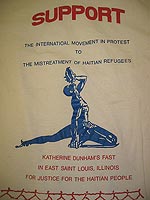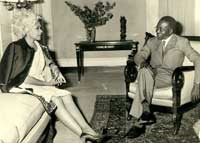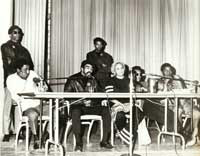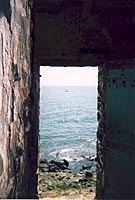
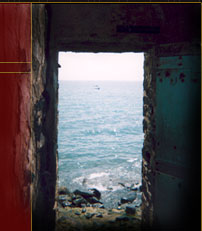
Most of us, either consciously or unconsciously, are critical of cultures and customs that are different from our own. Katherine Dunham learned to accept and appreciate the cultural norms of diverse peoples. In Rites de Passage she included coming-of-age rituals of women that were deemed so graphic that the performance was banned in Boston. She felt that dance should not only entertain but also educate. In direct opposition to her critics she continued to include the rituals in future performances.
One of her most controversial productions was Southland, which portrayed the lynching of a black man wrongly accused of raping a white woman. Dunham gave the following opening remarks during the premiere of Southland in 1951: |
The U.S. government strongly disapproved of the production’s negative tone. Because of growing pressure, Southland was performed only twice, once in Chile and once in Paris, and Miss Dunham suffered financially. For years her company, unlike other touring companies, did not receive any government support. Not only did she not stop speaking out against inequality and intolerance but she also continued to fund her company independently through theatrical productions and films. Another example of Dunham’s outspokenness occurred after a performance of Tropical Review in Louisville, Kentucky, in October 1944, when she pinned to herself the Colored Only sign that she found hanging backstage and made the following announcement to an all-white audience:
According to Sally Sommer, writing for PBS’s online Free to Dance series, Miss Dunham and her company experienced an additional financial burden in the 1940s when she refused to sign a Hollywood contract because it stipulated that she replace all of her darker-skinned dancers. At a time when African Americans were expected to know and remain in their place, Miss Dunham never stopped standing up for what she believed. She did not look for recognition for her actions. She often took her stance in a composed manner and made it understood that her position was non-negotiable. Another little-known action with major international impact involved Katherine Dunham during the late 1960s. While working in Senegal, Miss Dunham discovered that Edmond Rothschild, the owner of Club Med, planned to build a resort on the Isle of Gore, the site where many Africans were imprisoned prior to boarding ships for the dreaded Middle Passage. Rothschild intended to exclude native Senegalese and other Africans from membership. Miss Dunham addressed the president of Senegal (her personal friend) and was informed that although he disapproved of the plans, he felt that it was too late to make changes. She took the measure further and convened religious leaders of Senegal to fight this development. As evidence of her efforts, Gore Island is now a historic site and a destination for many African Americans. In a more publicized action, while living in East St. Louis at the age of 82, Miss Dunham went on a hunger strike to protest the treatment of Haitian refugees by the U.S. government and the ouster of President Jean-Bertrand Aristide. She received international attention and continued her hunger strike for 47 days despite the adverse effects to her health, ending it only after a visit and direct plea from President Aristide. >> Click on each image to see a larger view. <<
|






